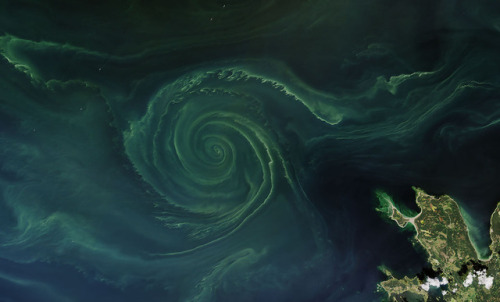Dive into your creative stream
Swirl - Blog Posts

AMYS’ GARDEN!






3 new bouquets (3) :
♡: about : she’her . Fem . East Asian . Polynesian . Greek.
♡: Ari and glinda luvr ˊᗜˋ
♡: If the sun refused to shine..
Daily clicks for Palestine!



La vorágine
Ailatan Engel flickr • instagram

Blooms in the Baltic
Every summer, phytoplankton – microscopic plant-like organisms – spread across the North Atlantic, with blooms spanning hundreds and sometimes thousands of miles. Nutrient-rich, cooler waters tend to promote more growth among marine plants and phytoplankton than is found in tropical waters. Blooms this summer off Scandinavia seem to be particularly intense.
On July 18, 2018, the Operational Land Imager (OLI) on Landsat 8 acquired a natural-color image of a swirling green phytoplankton bloom in the Gulf of Finland, a section of the Baltic Sea. Note how the phytoplankton trace the edges of a vortex; it is possible that this ocean eddy is pumping up nutrients from the depths.
Though it is impossible to know the phytoplankton type without sampling the water, three decades of satellite observations suggest that these green blooms are likely to be cyanobacteria (blue-green algae), an ancient type of marine bacteria that capture and store solar energy through photosynthesis (like plants).
In recent years, the proliferation of algae blooms in the Baltic Sea has led to the regular appearance of “dead zones” in the basin. Phytoplankton and cyanobacteria consume the abundant nutrients in the Baltic ¬and deplete the oxygen. According to researchers from Finland’s University of Turku, the dead zone this year is estimated to span about 70,000 square kilometers (27,000 square miles).
Read more: https://go.nasa.gov/2uLK4aZ
Make sure to follow us on Tumblr for your regular dose of space: http://nasa.tumblr.com.

